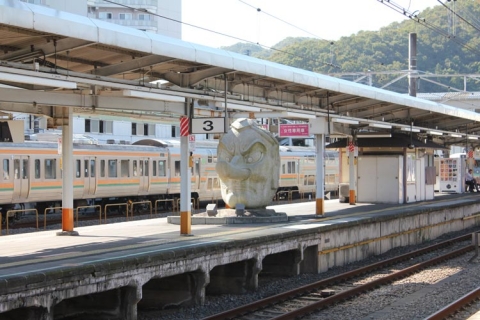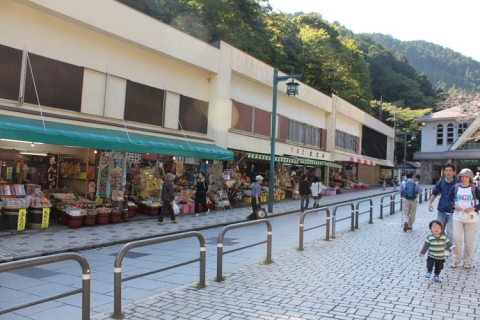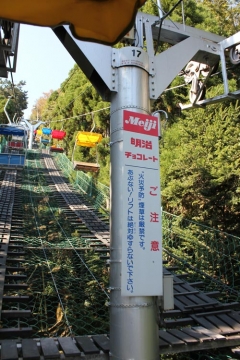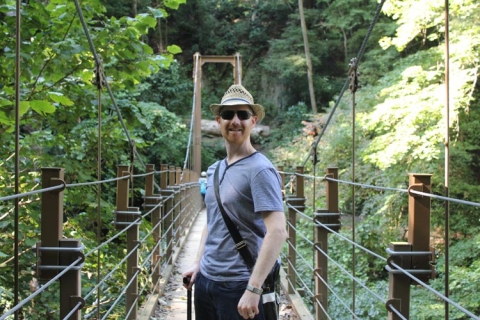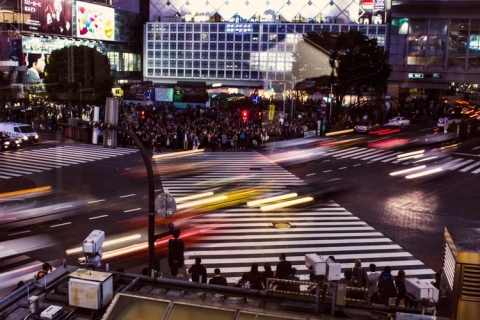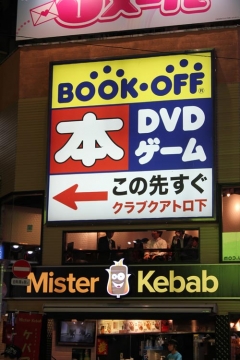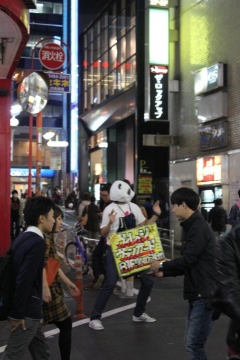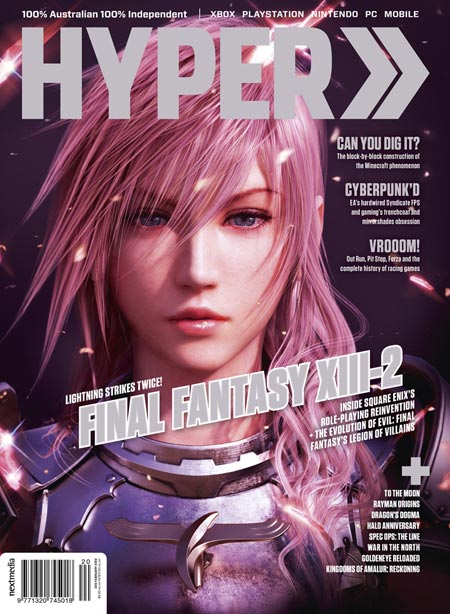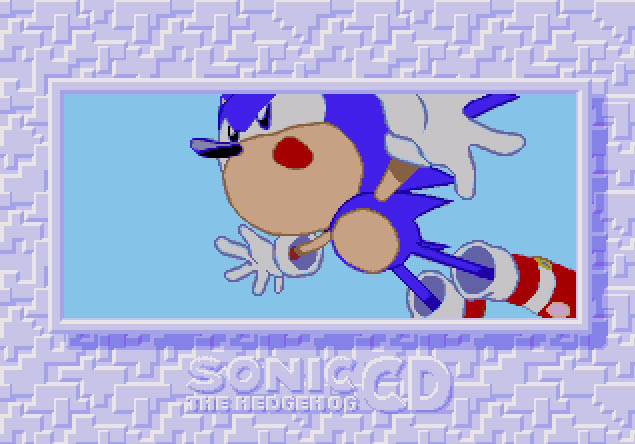Japan 2012 Travel Diary, Day 4
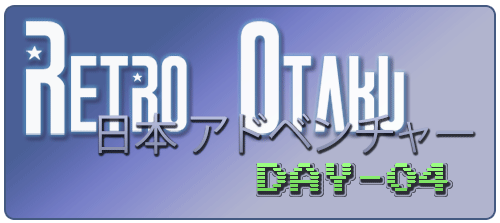
Friday marked the last full day we had in Tokyo and the culmination of a bit of a juggle to squeeze in what we missed out on doing to date owing to the previous day’s hiccup. Wifey and I geared up and hit the subway early in the morning to head out the furthest we’d been thus far to visit the town of Takao and attempt to climb its namesake, Takao-San (or Mount Takao). Being an amputee, the whole mountain climbing thing can be a bit tricky, but we were both keen to see how we went.
After the lengthy (but engaging) train ride out of the city center we arrived at the beautiful town of Takao. Now, the day got off to an interesting start – I needed to use the facilities once we got there and after deciding that I’d rather avoid the lineup in the train station, I spotted another public toilet on one of the paths leading up to the mountain. So, there I was standing at one of the urinals waiting for nature to kick in when an elderly Japanese gentleman wanders in, and I swear he was taking a look at my junk. For the entire time he was doing his business at the urinal. And it wasn’t like he was being subtle about it – he bent his head and took a good old look just in case he missed something if he merely glanced at it. When he was done relieving himself, he zipped up, washed his hands and wandered out. While this doesn’t seem to be anything too unusual from some of the stories other Westerners tell of their travels in Japan, this was the first time something like this had happened to me. When I told Wifey what happened after finishing up she doubled over with laughter, which was therapeutic. This land is an amazing and eccentric place.
Anywho, toilet stories aside, we continued the trek through the town and up to the entrance to the mountain. Instead of being super crazy and walking from the base station we decided to take the open chair lift to the first station and head up from there.
When we arrived we noticed that a couple of primary school kids’ classes were visiting which made for some very cute observations of kids at play, especially as they followed us up the mountain to visit the monkey park 🙂 Once we’d seen enough monkey behaviour oddly reminiscent of Kubrick’s 2001, off we went to have a quick chug of water while being amused at the kids ride-on exhibits and offer to take a photo of a father and son visiting for the day.
The mountain itself has a variety of ways to scale it, with the various paths becoming accessible around the entrance of the shrine situated a little bit above the first station. We ended up going along path number 4, which took us along a variety of mountain paths, stairs and an awesome suspended bridge
I’m not sure how that path compares to the others, but it was a hard push in places (well, at least for me), but the journey was amazing. Given I’m a slow walker due to the nature of my gimped leg, we would regularly make way for other hikers on the trail, returning the greetings of the other Japanese travellers going up or down the trail. The primary school kids in particular were fun to watch as they bounded up and down the place – one little girl decided she would be helpful and corrected my Japanese at one point, as I wasn’t emphasising the “-ni-” in “konnichiwa”, which Wifey and I both thought was cheeky and hilarious at the same time 🙂 Her teacher apologised profusely and seemed genuinely embarrassed, but I reassured her that we found the whole experience amusing and entertaining.
After a hard slog though, we hit the top and had an amazing view of the mountain ranges and cityscape from the top of the mountain. After enjoying the view and getting ice-cream and cold drinks (soft-serve green tea ice-cream is the best), we headed downhill and knocked through the same trail in excellent time. When we hit the bottom we picked up some dango (rice dough covered in a sweet and savoury sauce – yum!) before heading back to the train station.
To finish up the day in Tokyo we headed out to Shibuya to visit Hachiko at Shibuya Station, then walk and watch the famous Shibuya Crossing.
Wifey bought some clothes from Forever 21 (yay for Western sizing!) while we found a place for dinner – we ended up hitting a cook-it-yourself teppanyaki place where we fired up a few things on the hot plate (first time for me as I hadn’t been to a teppanyaki self-cook restaurant before), which turned out great. Before heading home we walked across the other side of the road to check out the Book Off for nerd stuff, while Wifey went shopping in their basement in the Bingo store for fancy pants designer second-hand clothes.
I walked out with a pile of PSone games that came in at practically nothing (around ¥100 each!) and Wifey walked out with a designer jacket. We then braved the subway system during another crazy peak period squashed in like crazy sardines, much like how the Tokyo Subway system is shown in docos and travel shows. As uncomfortably tight as it is, it’s all very orderly and everyone just gets on with things. We got the same experience the previous night too, so by this point we were getting pretty comfortable with things.
Once we got back to the hotel it was time to juggle and cram our impromptu shopping in Tokyo into our luggage in prep for the next part of the journey!
To view all posts on the Japan 2012 Travel Diary, just use the 2012 Japan Trip tag, as the whole series will be added to it over time.
